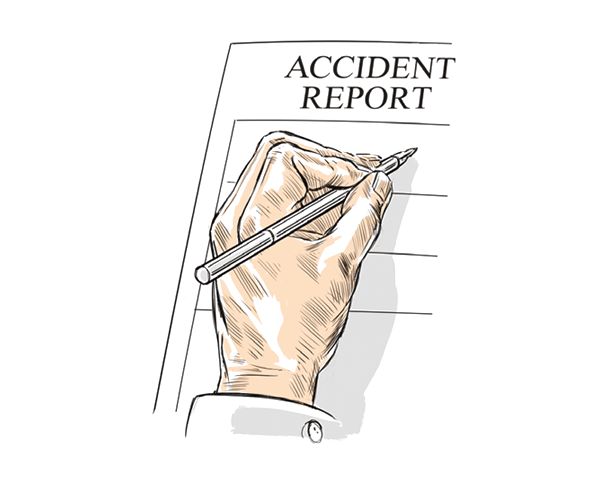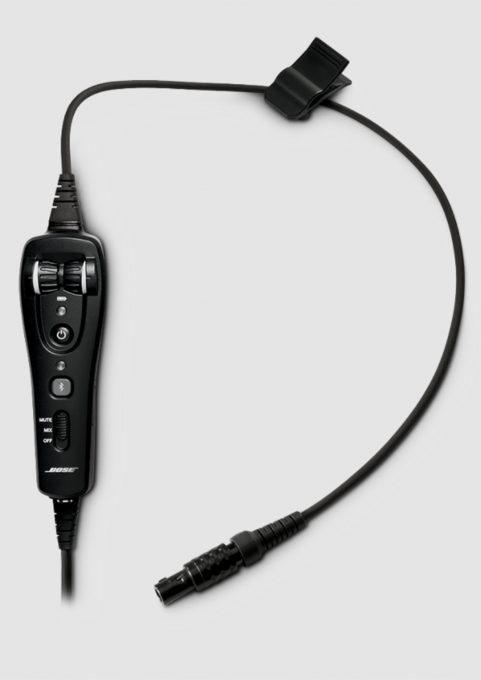Bad? Could be worse!
Textron Aviation (Cessna) 206
VH-AEE
near Happy Valley, Fraser Island, Queensland
Injuries: None
A Cessna U206G with two pilots on board was being used for landing emergency procedure training on a beach aircraft landing area on Fraser Island, Queensland. Just after touching down, the aircraft veered significantly to the left, toward the sea. The training pilot took control of the aircraft and conducted a go-around. Once airborne it was discovered that the rudder was jammed in the full-left position and the pilot had to apply full opposite aileron to maintain control. The engine subsequently stopped and the aircraft collided with water. The pilots escaped the aircraft and swam to shore. The aircraft was destroyed.
The investigation found that following touchdown a section of the nose landing gear attachment failed, resulting in the rudder becoming jammed in the full-left position. It was also identified that fuel starvation, due to either the uncoordinated flight or damage associated with the nose gear failure, led to the engine losing power at a height too low for recovery and the aircraft colliding with water.
This accident highlighted two further safety issues associated with the Cessna 206 that, while not contributory to this accident, can lead to fatal consequences in the event of a ditching.
First, the Cessna 206 procedure for ditching and forced landing stated that the flaps were to be extended to 40°. While that permits the aircraft to land at a slower speed, it also significantly restricts emergency egress via the cargo door. However, there is no warning about that aspect in the ditching or forced landing pilot’s operating handbook emergency procedures.
Second, the Cessna 206 with the cargo door does not meet the aircraft certification basis for the design of cabin exits due to the complexity associated with opening the cargo door if it is blocked by the flaps. This significantly hampers emergency egress and has resulted in fatalities.
Comment This was a pretty hairy chain of events and I think the crew did well to walk (or swim) away without injury. The cause was probably down to an overstress failure of the nose leg but the inquiry focused on concerns over egressing from the rear cabin in the event of ditching and rightly so.
Human condition?
Cessna F177RG
G-AYSY
Leicester Airport
Injuries: Two minor
Returning to Leicester Airport after a flight away from base, the pilot completed a normal join and circuit. The landing gear was lowered and a check of both the indicator lights and the external mirror showed it to be down and locked. Shortly after landing, as the aircraft slowed, the nose landing gear collapsed. The pilot and passenger vacated the aircraft with minor injuries.
The damage found to the centre torque link bolt and the torque link was attributed to them being in contact with the runway and was considered unlikely to have been a causal factor in the accident. No other components of the nose gear were found to be faulty and a test of the retraction / extension system worked correctly.
Given the lack of further structural damage to the nose gear, it is likely that the nose gear mechanical over-centre lock was not fully extended, either due to a fault or because the gear was retracted inadvertently after landing.
Comment It is always disconcerting when the cause of a particular incident eludes us but inadvertent operation of a lever or switch is all too common. Manufacturers even make flap switches that look like flaps and undercarriage levers that look like undercarriage legs. Does it make any difference? I rather suspect not… we continue to err like humans!
North Sea confusion
Reims Cessna F406
G-RVLW
North Sea
Injuries: None
The pilot was operating a cargo flight from Göteborg to East Midlands Airport. The pilot had already flown the aircraft from East Midlands to Göteborg earlier in the day.
“The pilot’s oxygen levels on his pulse oximeter were much lower than normal”
The flight time for both sectors was around three hours. With the aircraft in the cruise at FL180 over the North Sea, the pilot was alerted to a problem by a rapid onset headache, followed by being unable to find a regularly used function on the electronic flight bag.
Aware these could be symptoms of hypoxia, he checked his oxygen system. He also checked his oxygen levels on his pulse oximeter, which were much lower than normal, prompting him to increase the flow of oxygen through the regulator.
When this did not improve the situation, he changed the supply bottle, and within a few minutes he was feeling better and the oxygen level had recovered.
The Cessna F406 Caravan II is an unpressurised twin turboprop aircraft with a service ceiling of 30,000ft. If the pilot is required for operational reasons to cruise above 10,000ft altitude, then the aircraft carries two 682 litre portable oxygen bottles which are fitted with regulators and a cannula to fit to the nose of the pilot.
The regulator allows the pilot to select a rate of oxygen delivery suitable for the cruise altitude. The aircraft operator limited the aircraft to a maximum altitude of 18,000ft.
At this altitude, the delivery rate of oxygen is recommended by the operator to be 0.6 litres per minute giving each bottle a capacity of over 18 hours for a single user. Although the pilot elected to select an oxygen flow of 1.0 litre per minute as he found this a more comfortable setting, this would still have meant a capacity of more than 11 hours. Both the oxygen bottle and regulator were tested at an approved maintenance facility. This showed all flows to be within parameters and no faults could be found with either.
Comment Ultimately there was ‘no fault found’ but this is an interesting reminder of the effects of hypoxia and the importance of taking timely and correct actions. Cannulas and pulse oximeters are not always reliable, though, and it’s wise to be wary.
Misbehaving rocker
Druine D.31 Turbulent
G-ARNZ
Damyns Hall Aerodrome, Upminster
Injuries: One minor
When approaching the airfield to rejoin the circuit, the aircraft’s engine began to run rough then lost power completely. During the subsequent forced landing the aircraft came to rest inverted and the pilot sustained minor injuries.
A post-accident inspection of the engine revealed a crack on the plastic rocker arm in the fuel pump. After the accident, the LAA issued an Airworthiness Information Leaflet, which requires plastic rocker arms to be replaced with metal rocker arms in aircraft affected.
The fuel pump fitted to G-ARNZ was a sealed unit and the aircraft had flown 30 hours since its installation. It had a plastic rocker arm, which according to the LAA is a recent introduction to after-market pumps for this type of engine. Formerly it was normal for these pumps to have a metal rocker arm. No other fuel pump was installed.
Comment Perhaps we believe too readily that today’s manufacturing is better than in the past and that if it’s good enough for the automotive industry it’s probably good enough for much of what we do. In this instance neither was true and it reminds us to be sure that what we are fitting meets or exceeds the original spec.
Buzzard strike
American Legend AL3
N30BX
Greenville, North Carolina
Injuries: None
The pilot and his flight instructor friend were performing touch-and-go landings at different airports. Climbing out after his last touch-and-go he saw some turkey buzzards flying above the aeroplane. He turned to the right to avoid the birds but one of the buzzards hit the propeller and the aeroplane began to shake violently. The flight instructor, seated in the rear seat, shut off the engine and took over control of the aeroplane. The flight instructor then located a field to land in.
“One of the buzzards hit the propeller and the aeroplane started to shake violently”
They landed with a tailwind and as trees at the end of the field approached, the pilot was not sure if he depressed the brakes or the flight instructor did, or they both did, but the aeroplane nosed over and came to rest inverted about 40ft away from the trees, resulting in substantial damage to the rudder and wings.
Comment Birds can cause significant damage to a light aircraft, so it’s reassuring such events are quite rare in the UK. The instructor may have had no option but to land downwind, however, the increased risk of injury in doing so should not be accepted lightly.







